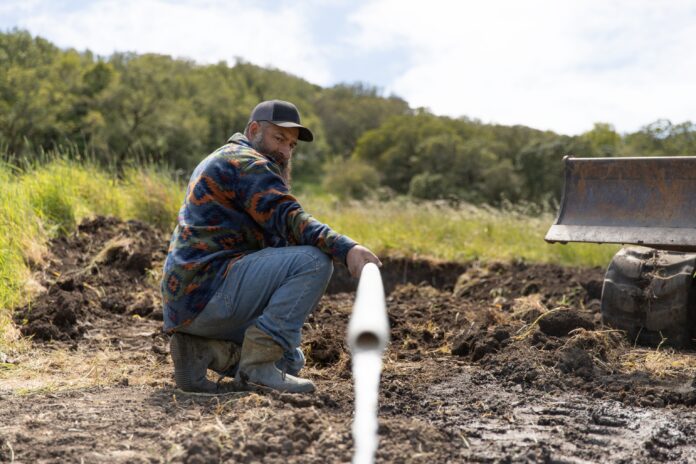This winter’s heavy rain storms offered the North Bay a respite from a three-year drought, but a report released in late May warns that local water users should remain vigilant.
The publication, titled “Agricultural Resilience in the Face of Extreme Dry Conditions,” was prepared by a variety of public agencies, nonprofits and ag industry groups. It offers lessons learned from the 2019-2022 drought, when rainfall in Marin and Sonoma counties ranged from 17 to 68% of normal levels.
First and foremost: Continue to think about water use even if the hills are green now, because extreme weather (characterized by wilder fluctuations between dry and wet years) is now the norm.
In a statement announcing the release of the report, David Lewis, the director of Marin County’s University of California Cooperative Extension, said: “Our focus should be on building community resilience to the [climate change-fueled weather] fluctuations. That will come from us talking about the adaptations and responses needed across those swings. Concepts like drought and flood need to be replaced with water resource planning for extreme conditions.”
Although drought is a community-wide issue, it’s not surprising this report came from—and focuses on—the agricultural industry. Afterall, ag uses a lot of water—and there’s money on the line. In 2021, agriculture production value from Sonoma and Marin counties totaled nearly $900 million, with $540 million of the total coming from wine grapes.
In reviewing the 2019-2022 drought years, the report credits regional policy makers and private groups with moving quickly to plan a response in the winter of 2019. Actions ranged from local water districts allowing trucks to deliver water to drought-stricken ranches and other agricultural interests, and state water officials allowing Sonoma Water to temporarily reduce the flow of water in the Russian River and Dry Creek.
Moving forward, the report calls for ongoing collaboration on drought issues. In that vein, it leads with a quote from a May 1978 state report on the just-passed 1976-77 drought: “We must take the opportunity now, while events are still fresh in mind, and we have the breathing spell provided by the 1978 rains, to plan for coping with the next dry period. There is no assurance that the next drought is not just beyond the horizon. We can be assured, however, that drought will return, and, considering the greater needs of that future time, its impact, unless prepared for, will be much greater.”
According to climate scientists’ recent studies, that dire drought may be unfolding already.
“Severe, extreme, and exceptional droughts in California and many western states have become more frequent, intense, unpredictable, and damaging over the past two decades as climate change impacts have intensified,” the Sonoma-Marin report states. “This most recent drought that began in the fall of 2019 and has continued through 2022, is one of the most severe droughts California has faced.”
The problem certainly isn’t limited to the North Bay. In February 2022, the journal Nature Climate Change found that the Western U.S. and northern Mexico had been experiencing their driest period in at least 1,200 years. “Climatologists have reported that the last multi-decade megadrought, comparable to this dry period, occurred in the 1500s,” the Sonoma-Marin agriculture report states.











